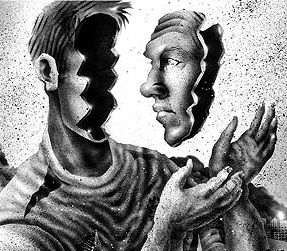Cultivating the Witness
- Shining Waters
- Dec 17, 2017
- 3 min read


Last week's blog post gave a brief explanation of the 5 Koshas or "sheaths" of the body. This week, I want to explore "Vijnanamaya kosha" in a little more in-depth. This is "The Witness" body. We cultivate the Witness by practicing mindfulness - by daily stepping back from our actions, our thoughts and emotions and noticing who is doing the action, who is thinking, who is feeling. There are actually several ways we can begin to cultivate the Witness Body. One way is by sitting in stillness and listening. Begin with listening to the sounds outside the body: from the most distant sound you can perceive, gradually, move closer - what is the closest sound or loudest sound you are perceiving? Then going within the body and listening to the sound of your breath perhaps the sound of swallowing, or maybe even the sound of your heartbeat. Begin to hear all the sounds around you and within you simultaneously. Become aware of sound arising all around you and within you. Become aware of Who is listening. Another way to cultivate the Witness is by practicing a Body Scan. You might do this through guided meditation - it is much easier to do if you have a person or a recording guiding your through the body so you do not have to think about what comes next - that in itself can be a distraction. You could use a Yoga Nidra practice, as Yoga Nidra typically includes a "rotation of consciousness" or guided journey through the body where you explore each part of the body and experience yourself embodied. There are several Nidra practices available on youtube and I have some recordings available for my private clients as well. Another practice is simply stopping throughout your day in the middle of any activity and ask yourself "Who is doing this?, Who is the do-er?" Instead of mindlessly going through the motions. You can do this while, eating, driving, typing on your computer or brushing your teeth. For example, when eating take a moment to savor each bite of food. Take your time chewing, feeling the texture of the food in your mouth. Tasting the quality of the food - is it salty? sweet? bitter? sour? Feeling the food slide down your throat into your esophagus and imagining it enter the stomach and intestines where it becomes nutrition for the body. Sitting at your desk at work, you might take a moment to just feel the sensation of your feet on the ground. Look down at your hands. Feel your hands. Who is perceiving? We also cultivate the Witness through the practice of meditation. When you have time to sit for 10 or 20
minutes, try holding Citta Mudra, touching the tips of your index fingers to the tips of your thumbs and extending the other fingers straight out. Bring the hands together in front of the chest, slightly away from the body, and relax your arms and shoulders. This is the "Gesture of Witness Consciousness" (from Mudras for Transformation and Healing). "Citta" means "consciousness" and this mudra "supports the awakening of witness consciousness in which thoughts feelings and limiting beliefs are seen more clearly, without identifying with them so completely." Citta mudra helps us to cultivate one-pointed concentration, essential for meditation. Close your eyes to focus your awareness inward. Begin to notice your breath. Whenever your mind wanders, just notice where it goes. Notice who is thinking these thoughts. There is no right or wrong way to do this. Notice without judgement and bring your awareness back to your breath. Finally, try this simple exercise, when you feel pain or grief. Take several deep breaths and imagine breathing into your pain. Reach up and touch your heart - perhaps taking the left hand over the right and the right hand over the heart in Hridaya mudra. Take a few deep breaths. Acknowledge that you are experiencing pain and that pain is part of the human experience. You are not alone. Practice compassion for yourself. Treat yourself with loving kindness. Breathe peace into your body. Feel your breath connect you to all of life. Breathe compassion. Why do we want to cultivate the Witness? By being able to step back from our thoughts, actions and emotions, we can also step back from pain and suffering. We can step back from anger and anxiety. We can begin to experience that we are part of a greater whole and that there is no separation. We can perceive the changing nature of all things and know that nothing is permanent - including our suffering. I hope these mindfulness exercises are helpful. Namaste.






























Comments